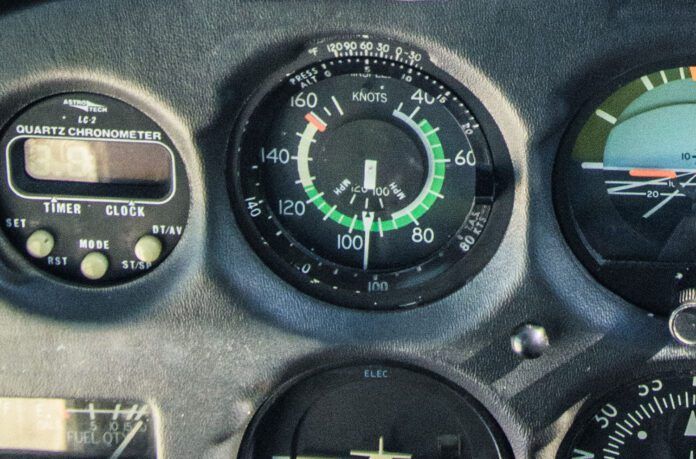I was about halfway through my private pilot training, and returning to my home base from an uneventful solo cross-country. I was in the Cessna 150 I had first soloed, and despite my relatively few hours, had become comfortable with it. One habit I had adopted, especially when flying solo, was to fly my landing approaches a tad faster than might be recommended. I rationalized it by noting I was typically well above the airplane’s stalling speed, but also well within the airspeed indicator’s white arc. All the runways I used were long enough it didn’t make much difference in the 150.
For the last landing of the day, I carried a few extra knots over the runway threshold and into the flare, as usual. Rolling past the intersecting runway I wanted to use taxiing back to the FBO, I slowed to almost walking speed before swinging around on the runway and returning to the intersection.
Imagine my surprise when I saw a Cessna 182 at the approach end of the runway, turning off at the first intersection and proceeding to the ramp. My instructor was in it, returning from a quick trip to a neighboring airport. He hadn’t made any CTAF calls, so I didn’t even know he was in the area. But I was dumbfounded he could land that 182 using lots less runway than I had. How did he do that?
After securing both airplanes, we chatted in the pilot lounge, where I learned a valuable lesson about piston singles on one hand and about energy management on another.
The thing I learned about piston singles is that, by type certification rules, they must have a landing configuration stall speed (VS0) of no more than 61 KCAS. My little 150’s VS0 was 42 knots; the 182’s was 48, only a six-knot difference. I had flown the pattern down to the flare at about 65-70 knots, which my instructor flew the 182 at about 55-60 knots. Before that discussion, I had no idea the two stall speeds were that close together. My instructor obviously could get down and stopped more easily because he had less energy to dissipate on touching down.
Perhaps thanks to that learning experience, I’ve never come close to running off the end of a runway. I’ve been in the right seat when someone else managed it, but that’s another story.
Have you encountered a situation or hazardous condition that yielded lessons on how to better manage the risks involved in flying? Do you have an experience to share with Aviation Safety’s readers about an occasion that taught you something significant about ways to conduct safer flight operations? If so, we want to hear about it.
We encourage you to submit a brief (500 words) write-up of your Learning Experience to Aviation Safety for possible publication. Each month, Aviation Safety publishes a collection of similar experiences sent to us by readers. Sharing with others the benefit of your experience and the lessons you learned can be an invaluable aid to other pilots.
You can send your account directly to the editor by e-mailing it to [email protected]. Put “Learning Experience Submission” in the subject line; add your name and daytime telephone number at the bottom of the e-mail.
Your report will be considered for publication in the Aviation Safety’s readers’ forum, “Learning Experiences,” and may be edited for style and length. Anonymity is guaranteed if you want it. No one but Aviation Safety’s editor is permitted access to the reports. Your name and telephone number are requested only so that the editor can contact you, if necessary.
While we can’t guarantee your submission will get published, we can guarantee that we’ll closely review and consider using it.
All Learning Experiences submissions become the property of Aviation Safety and may be republished.




